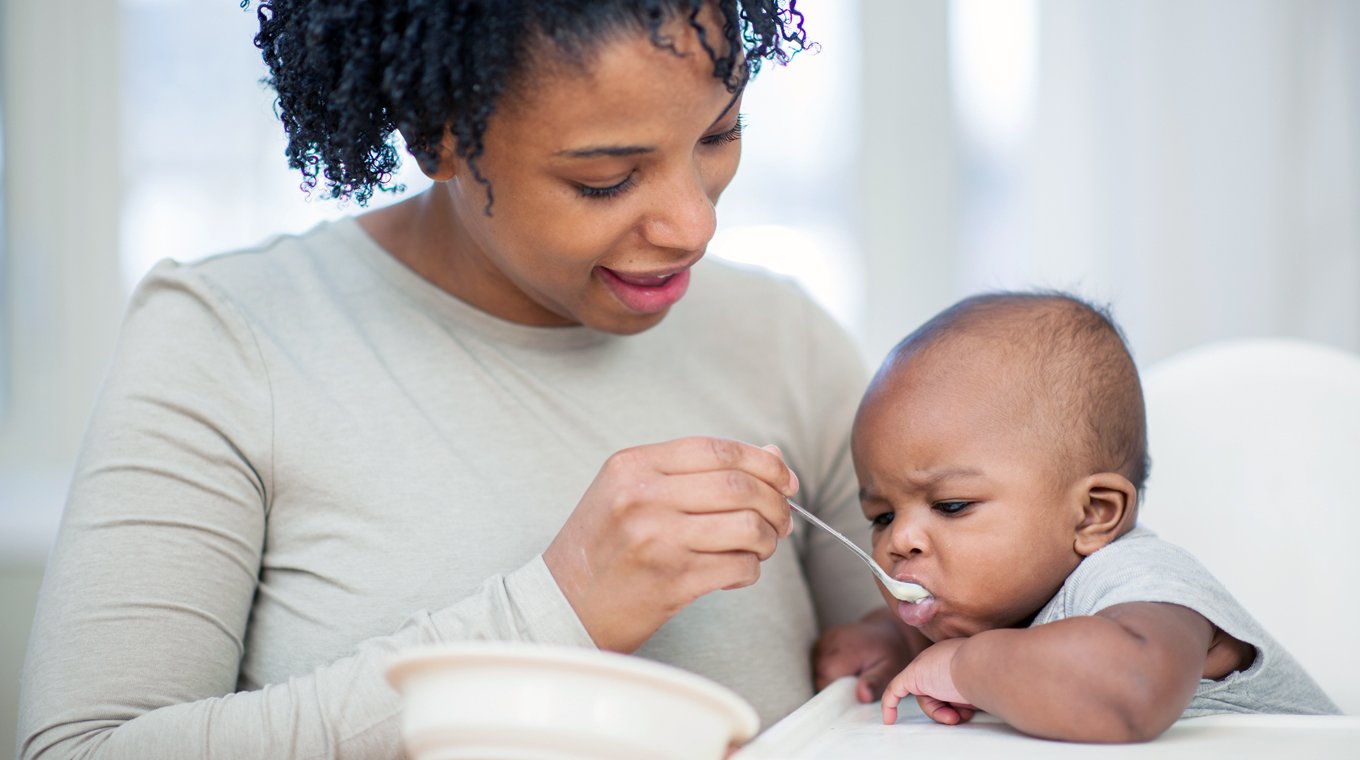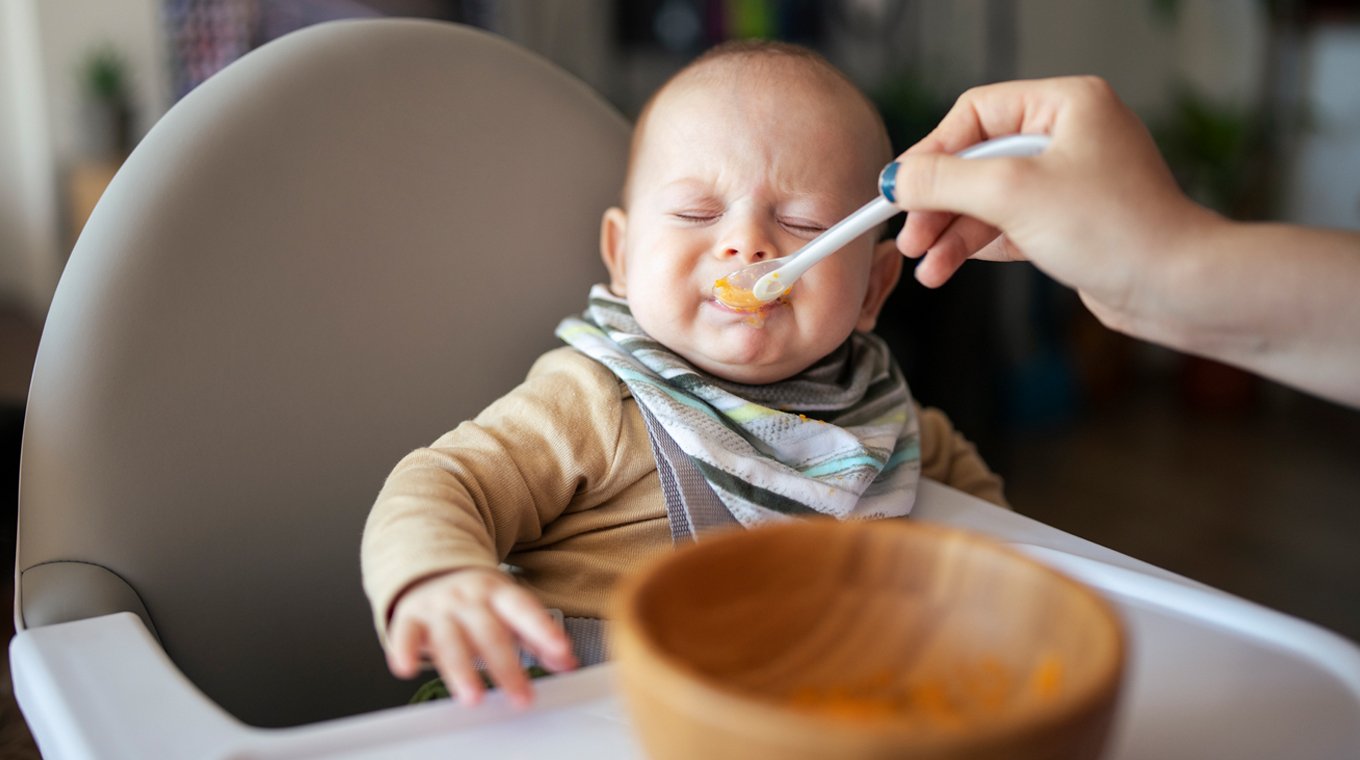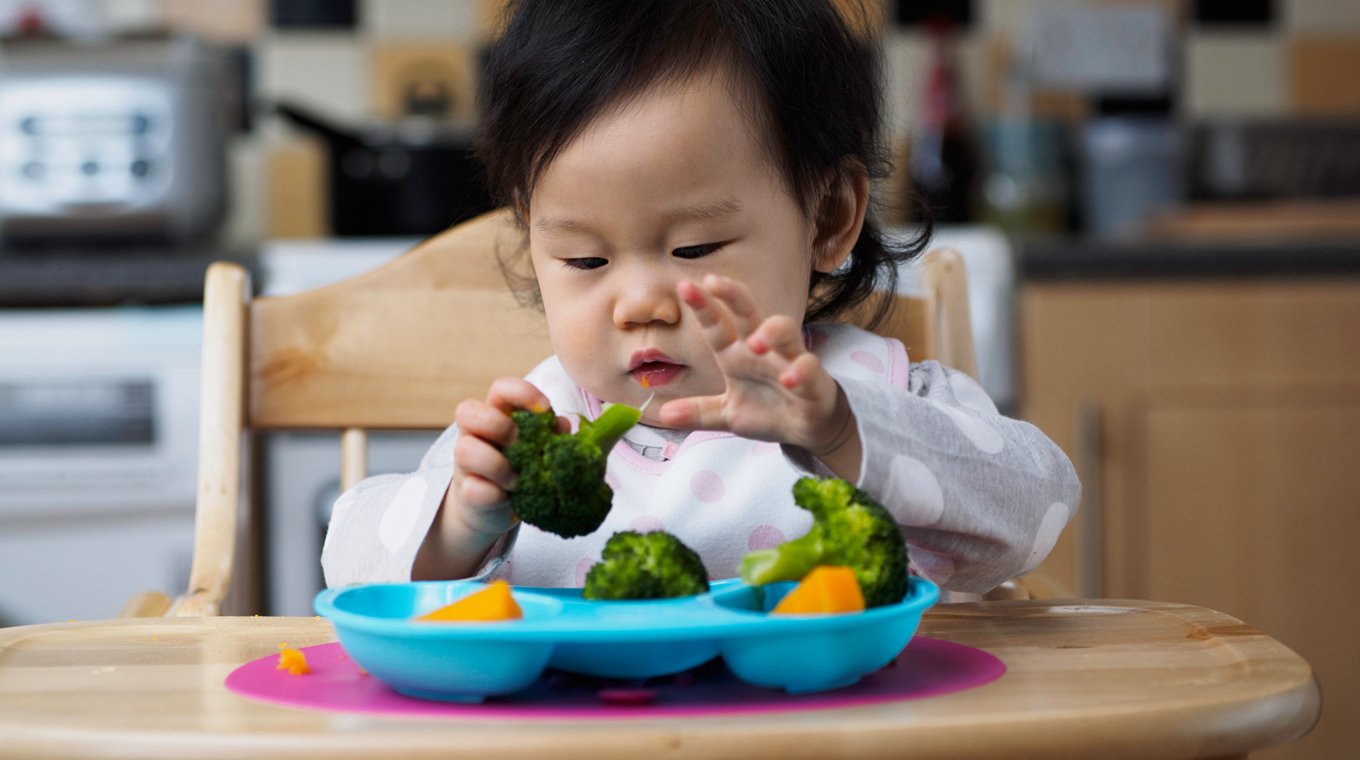In this article:
While some babies start grabbing for food on mom's plate by the time they're 5 months old, others don't demonstrate much interest in solid foods. The Centers for Disease Control and Prevention (CDC) recommends starting your baby on solid foods at 6 months, provided they're showing signs of readiness. But what if there's resistance and your baby is not eating solids? Here are some ideas that may help make mealtimes easier.
Best solid food to start if your baby is resistant

CDC guidance recommends starting your baby off with fortified baby cereals, protein, fruit, vegetables, grains, cheese, and yogurt, but if your baby is resistant to solids, you may need to try different avenues to encourage them to eat.
Some good solid foods to try include bite-sized pieces of cooked vegetables, such as carrots, peas, squash, and cauliflower, cooked pieces of pasta, slices of banana, hard-boiled egg yolk, cubes of tofu, and mashed potatoes.
Of course, to avoid a choking hazard, don't offer foods that don't break down easily. Start with a single tablespoon of food and let your baby set the pace. First foods should be smooth or mashed, but as your baby grows accustomed to these, you can then mince or chop their food.
"The first solid food we offered was steamed and pureed sweet potato, with breast milk to thin it out," health coach and mom Brittany Mullins wrote on her blog, Eating Bird Food.
"We offered this for a few days and then offered avocado pureed with breast milk, then mashed banana and apple puree. She took to all of these foods right away so we started adding in more foods and pretty quickly transitioned to purees that were thicker and chunkier," the holistic nutritionist continued.
You can also provide different types of dip to go along with food, such as mild guacamole, yogurt, and applesauce to modify both the taste and texture of finger foods. Show your baby how to dip her bite-size pieces of cooked fruit, teething biscuits, and circle-shaped cereal into the bowls.
How to get baby to eat solid food

If your little one is resistant to solid foods, begin with a little troubleshooting to ensure that they're hungry enough to even want to eat.
"If you’ve been offering solids for a couple of months and your baby is still not interested, the first place I would look is their milk and solid food feeding schedule," pediatric dietician Edwena Kennedy advised on her parenting blog, My Little Eater. "Make sure there is at least 30 minutes between milk and solid foods. You may even want to go up to 90 minutes to make sure your baby is actually showing up to the table hungry."
Kennedy advises that for babies 9 months of age or older who are still disinterested, caregivers should try offering solid foods before milk. Milk is easier, so it may be an issue of convenience and familiarity for your child. They should be eating three meals per day at 9 months, so it's important to offer solids as often as possible.
Modeling good eating habits can encourage your baby to eat solid foods. Sit with them at meal times and show your little one how tasty solid food can be by eating your own meal alongside them. Take your first bite and put on your best performance with plenty of smiles and even an exaggerated "Yum!"
Turning eating into a game is another method. You can treat the spoonful of food like an airplane or train, or make silly noises with every bite.
Best utensils for introducing all types of solid food

It may take weeks or months before your baby is truly able to eat solid foods, but consistency is key, and establishing a regular routine around meals should be a top priority. Offer a variety of food textures to help your baby learn how to chew, as this is an integral component of self-feeding and later, speech development.
If you've exhausted all options and your baby still hasn't taken to some types of solid food, it may be time to bring in reinforcements in the form of special utensils at mealtimes:
Mesh fruit strainers
Strainers work much like a pacifier; frozen or thawed fruits and other foods placed in the mesh compartment allows baby to hold the utensil and eat independently.
Silicone feeders
These are special spoons that work much like the mesh strainer but with silicone, which can also assist with teething.
Compartmentalized plates
Section plates allow your baby to easily dip foods into yogurt or peanut butter, which can make eating solids more interactive and interesting.
No-spill snack cups
Finger foods like whole-grain cereals, freeze-dried yogurt, and cheese puffs can be messy. No-spill snack cups work great on the go because your baby can still eat solids without the mess.
Remember that it may take some time to get your baby to eat solid foods, so have patience and give yourself and your little one some grace. Even at a year old, you'll still need to chop food into smaller pieces and ensure vegetables are soft enough. The end goal is to have your child eating most of the same foods the rest of the family is eating by their first birthday, so keep at it.
Of course, if your baby is exhibiting extreme resistance to solid foods or having other difficulties with eating, it's important to bring this up with the pediatrician to rule out other problems and to ensure they're getting adequate nutrition.




